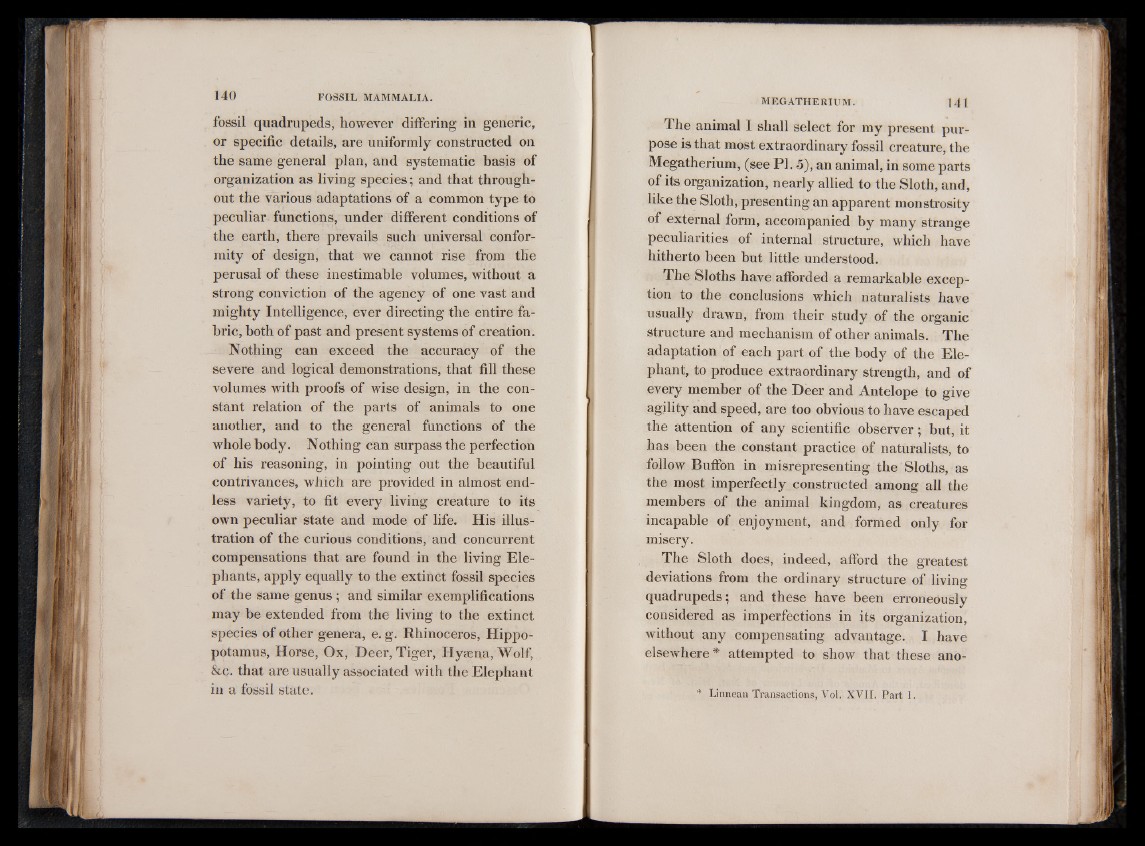
fossil quadrupeds, however differing in generic,
or specific details, are uniformly constructed on
the same general plan, and systematic basis of
organization as living species ; and that throughout
the various adaptations of a common type to
peculiar functions, under different conditions of
the earth, there prevails such universal conformity
of design, that we cannot rise from the
perusal of these inestimable volumes, without a
strong conviction of the agency of one vast and
mighty Intelligence, ever directing the entire fabric,
both of past and present systems of creation.
Nothing can exceed the accuracy of the
severe and logical demonstrations, that fill these
volumes with proofs of wise design, in the constant
relation of the parts of animals to one
another, and to the general functions of the
whole body. Nothing can surpass the perfection
of his reasoning, in pointing out the beautiful
contrivances, which are provided in almost endless
variety, to fit every living creature to its
own peculiar state and mode of life. His illustration
of the curious conditions, and concurrent
compensations that are found in the living Elephants,
apply equally to the extinct fossil species
of the same genus ; and similar exemplifications
may be extended from the living to the extinct
species of other genera, e. g. Rhinoceros, Hippopotamus,
Horse, Ox, Deer, Tiger, Hyæna, Wolf,
&c. that are usually associated with the Elephant
in a fossil state.
The animal I shall select for my present purpose
is that most extraordinary fossil creature, the
Megatherium, (see PI. 5), an animal, in some parts
of its organization, nearly allied to the Sloth, and,
like the Sloth, presenting an apparent monstrosity
of external form, accompanied by many strange
peculiarities of internal structure, which have
hitherto been but little understood.
The Sloths have afforded a remarkable exception
to the conclusions which naturalists have
usually drawn, from their study of the organic
structure and mechanism of other animals. The
adaptation of each part of the body of the Elephant,
to produce extraordinary strength, and of
every member of the Deer and Antelope to give
agility and speed, are too obvious to have escaped
the attention of any scientific observer; but, it
has been the constant practice of naturalists, to
follow Buffon in misrepresenting the Sloths, as
the most imperfectly constructed among all the
members of the animal kingdom, as creatures
incapable of enjoyment, and formed only for
misery.
The Sloth does, indeed, afford the greatest
deviations from the ordinary structure of living
quadrupeds; and these have been erroneously
considered as imperfections in its organization,
without any compensating advantage. I have
elsewhere* attempted to show that these ano-
* Linnean Transactions, Vol. XVII. Part 1.